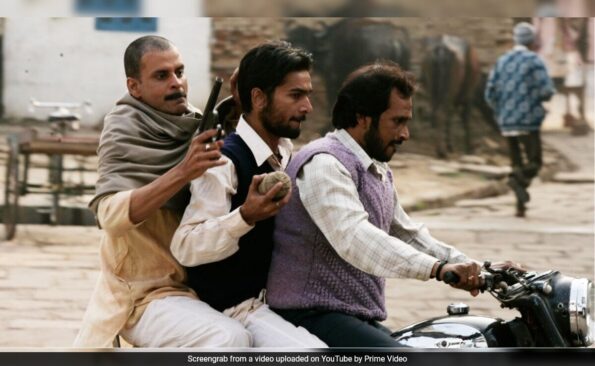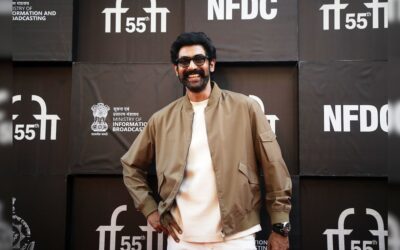Gangs Of Wasseypur Re-Release: The Making Of A Cult Classic And Its Influential Legacy

Gangs Of Wasseypur is more than just a film; it is a cultural phenomenon that reshaped Indian cinema’s landscape. Its masterful narrative, innovative soundtrack, and influential casting choices have left an indelible mark on Bollywood and beyond. The film has returned to the limelight as it was re-released in theatres on August 30. Released in two parts in mid-2012, Anurag Kashyap’s Gangs Of Wasseypur has undeniably cemented its place as a seminal work in Indian cinema. It stands as a monument to the genre-defying storytelling and cultural shifts in Bollywood over the last decade.
At the heart of Gangs Of Wasseypur‘s impact is its sprawling narrative that weaves together a complex tale of revenge, power and crime across several decades. Set against the backdrop of the coal-rich town of Wasseypur in Jharkhand, the film chronicles the violent rivalry between two families, showcasing the socio-political and economic upheavals of post-independence India. By structuring the film into two parts and utilising a serial-like format, Anurag Kashyap created a storytelling model that was both ambitious and immersive.
The film’s episodic nature, with its rich character development and intertwining storylines, mirrors the storytelling techniques of television series. This approach was ahead of its time, pre-dating the rise of streaming platforms. The nearly six-hour runtime was not merely an indulgence but a conscious choice to provide a detailed exploration of its expansive universe.
One of Gangs Of Wasseypur‘s most significant contributions was its role in shaping the careers of several actors who are now considered among the finest of their generation. Nawazuddin Siddiqui’s portrayal of Faizal Khan was a breakthrough that earned him international acclaim. Siddiqui, whose career was previously confined to peripheral roles, emerged as a leading man, setting the stage for his future successes in projects like Sacred Games, The Lunchbox and Serious Men among others.
Similarly, Richa Chaddha and Huma Qureshi, both introduced through Gangs Of Wasseypur, quickly rose to prominence in the film industry. Richa gained substantial visibility and multiple offers following the film’s release. Jaideep Ahlawat and Vineet Kumar Singh also benefited significantly, with Ahlawat becoming a notable streaming star through Paatal Lok and Singh landing leading roles in Anurag Kashyap’s subsequent projects. Pankaj Tripathi, who played the hitman Sultan Qureshi, became one of the most sought-after actors in Hindi cinema, thanks to Gangs Of Wasseypur‘s success. His roles in Mirzapur, Criminal Justice, Stree franchise and Bareilly Ki Barfi highlight the long-lasting influence of the film on his career.
Among the film’s many achievements, its role in revitalising Manoj Bajpayee’s career is particularly notable. At the time of its release, the actor was struggling to find impactful roles and the film’s success provided a crucial turning point. His portrayal of the formidable gangster Sardar Khan not only revived his career but also led to iconic roles in subsequent projects, including his acclaimed performance in The Family Man.
Sneha Khanwalkar’s eclectic soundtrack for Gangs Of Wasseypur played a crucial role in the film’s popularity and influence. The music was groundbreaking in its fusion of traditional Indian folk with contemporary sounds, creating a unique auditory experience that impressed the viewers. The soundtrack not only complemented the film’s gritty narrative but also pushed the boundaries of what Bollywood music could achieve.
Gangs Of Wasseypur‘s portrayal of small-town India and its emphasis on underrepresented communities marked a significant shift in Bollywood’s focus. Prior to the film, the industry predominantly catered to urban and NRI audiences, often neglecting the stories of India’s rural and semi-urban areas. Gangs of Wasseypur’s success highlighted the demand for such narratives and paved the way for a wave of films and series that explored the socio-economic realities of smaller towns.
The film’s influence can be seen in the rise of culturally specific South Indian hits like the KGF series, which, while embracing a more ‘drama’ format, follows a similar gangster epic template. Long before streaming became mainstream in India, Gangs Of Wasseypur was a hit among viewers who pirated films online. Its serialised structure and episodic nature made it well-suited for the binge-watching format that streaming platforms would later popularise. Anurag Kashyap’s subsequent involvement in Netflix’s first Indian original, Sacred Games, adopted a similar sprawling narrative style and thematic depth.
Search
Recent
- "It’s a pleasure to be part of it": Devdutt Padikkal on Team India
- IND vs AUS 1st Test: Jasprit Bumrah opens up on his leadership role
- Down-and-out India face rusty Aus for supremacy
- "He’ll be under less pressure being in Australia than India": Waugh on Kohli
- Farm fires still a burning issue in Punjab, tally crosses 10.2k mark





